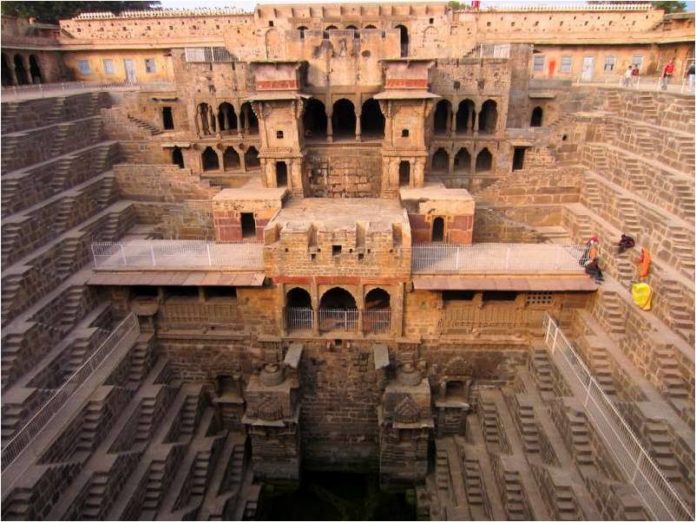It’s easy to dig of flaws and poke fun at everything that’s going wrong with our country but it takes true insight to take a look at the valuable beauty of Mother India. Whenever we think of Indian architecture and aesthetic beauty, we talk of the Taj Mahal, the Khajuraho temples , the Konark temple , QutabMinar and so on but among the most important contributions were not just majestic forts or beautiful tombs, temples and mosques it was unique water management system called BAOLIS.
Baolis or baoris were the stepwellsused for storing water. These were the precursorof clubs and parties in ancient and medieval India where people could hang out, provide hospitality to guests and also get water for their daily needs. They were a common sight in areas of Gujarat and Rajasthan.
This water management system was discouraged by the British who felt difficulty in digesting the fact that the same water was used for drinking as well as washing and bathing. They discouraged these and developed systems of pumps and pipes. This led to drying up and eventual deterioration of an ancient lifestyle. Delhi alone boasts around 30 baolis including Agrasenkibaoli and Tughlaqabad Fort Baoli.
The one in Abhaneri in Dausa district in Rajasthan, is one of the world’s oldest and most spectacular stepwells. The Chand Baori of Abhaneri is an example of mathematical perfection from an ancient time. It has 3500 steps built on 13 levels and with mind boggling symmetry as they taper down towards the pool. Seeming to be an upside down pyramid this baori was built between the 9th and 10th century by Raja Chanda of the Chauhan dynasty. It was attached to the Harshat Mata temple. It was ritual to wash hands and feet at the well before visiting the temple. The temple was razed during the 10th century but it’s remains still boast architectural and scriptural styles of ancient India. Harshat Mata is considered to be the goddess of happiness pouring her divine blessings over the village.
Now there are railings and so we can’t go down the steps but the temperature at the bottom is 5-6 degrees cooler and must have provided solace during the hot summer days and nights to the locals.
If the stones could speak they would account stories of a time when royalty sat in these rooms, heard the pitter patter of raindrops on the roof or rains splash on the beautiful steps , even as strains of raag malhar was sung by the court musicians of that period. Peacocks would have danced on the surrounding walls .Koels would have sung in their melodious & heart warming voices. Though stripped of plaster now, these stonewalls would have been filled with many paintings to emphasize the feelings of being in a beautiful moonlight oasis of happiness. The chanting of mantras by priests as they went down to have accentuated the spirituality of the shimmering water pool and the singing of the women as they went to collect water must have elated even the hardest of hearts.
Well said by Benjamin Franklin “When the well’s dry, we know the worth of water”. We need to retrieve our ancient ways for old will always remain gold.
Author: Kashish












Really an insightful write up by kashish .. Keep it up!